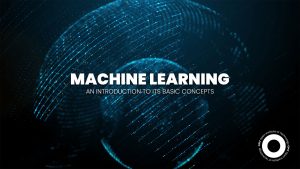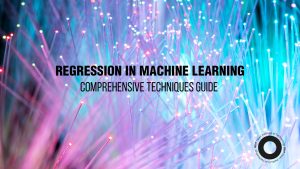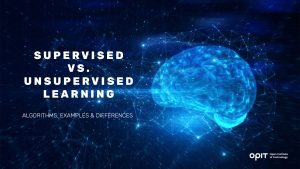
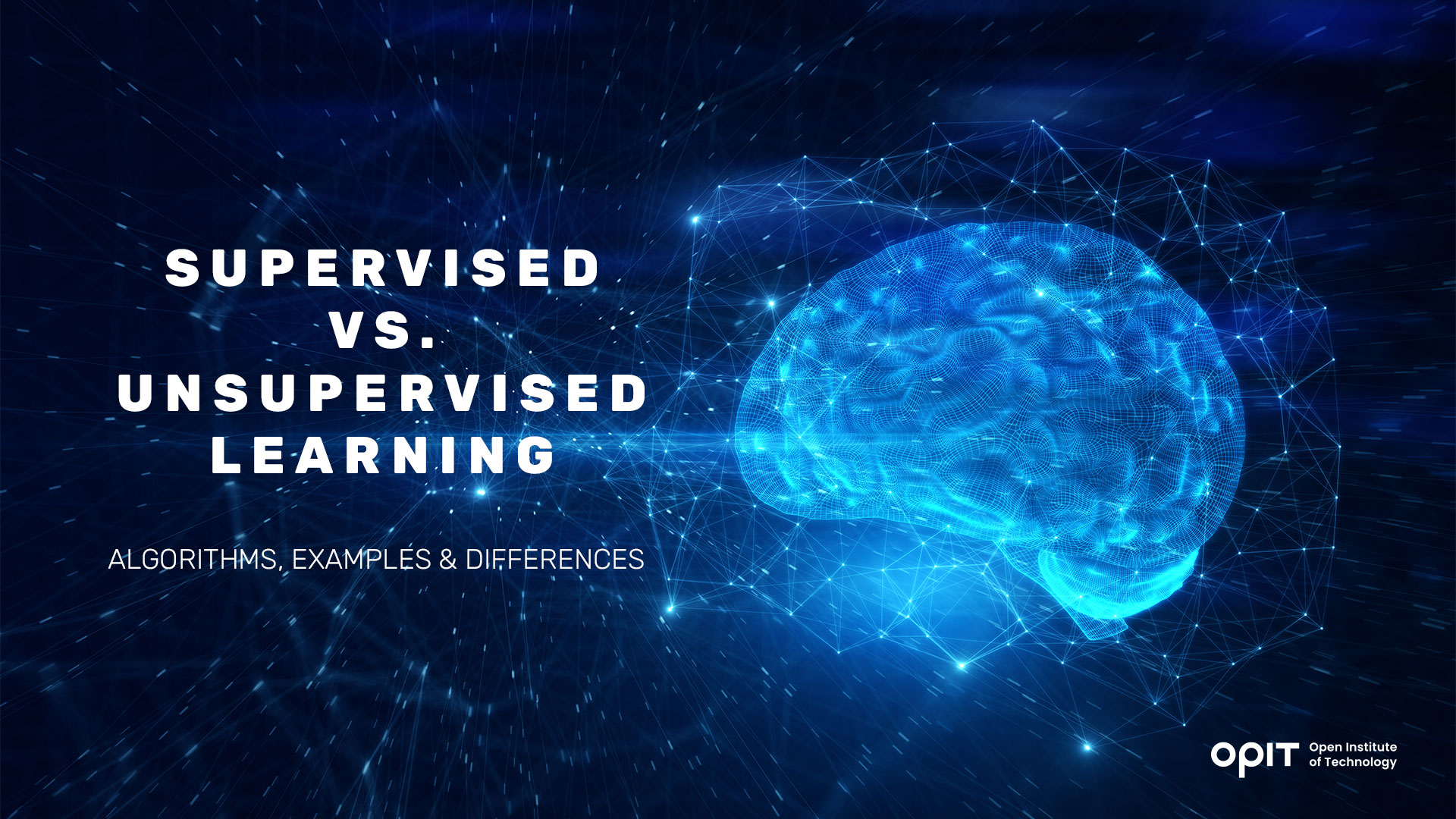
The human brain is among the most complicated organs and one of nature’s most amazing creations. The brain’s capacity is considered limitless; there isn’t a thing it can’t remember. Although many often don’t think about it, the processes that happen in the mind are fascinating.
As technology evolved over the years, scientists figured out a way to make machines think like humans, and this process is called machine learning. Like cars need fuel to operate, machines need data and algorithms. With the application of adequate techniques, machines can learn from this data and even improve their accuracy as time passes.
Two basic machine learning approaches are supervised and unsupervised learning. You can already assume the biggest difference between them based on their names. With supervised learning, you have a “teacher” who shows the machine how to analyze specific data. Unsupervised learning is completely independent, meaning there are no teachers or guides.
This article will talk more about supervised and unsupervised learning, outline their differences, and introduce examples.
Supervised Learning
Imagine a teacher trying to teach their young students to write the letter “A.” The teacher will first set an example by writing the letter on the board, and the students will follow. After some time, the students will be able to write the letter without assistance.
Supervised machine learning is very similar to this situation. In this case, you (the teacher) train the machine using labeled data. Such data already contains the right answer to a particular situation. The machine then uses this training data to learn a pattern and applies it to all new datasets.
Note that the role of a teacher is essential. The provided labeled datasets are the foundation of the machine’s learning process. If you withhold these datasets or don’t label them correctly, you won’t get any (relevant) results.
Supervised learning is complex, but we can understand it through a simple real-life example.
Suppose you have a basket filled with red apples, strawberries, and pears and want to train a machine to identify these fruits. You’ll teach the machine the basic characteristics of each fruit found in the basket, focusing on the color, size, shape, and other relevant features. If you introduce a “new” strawberry to the basket, the machine will analyze its appearance and label it as “strawberry” based on the knowledge it acquired during training.
Types of Supervised Learning
You can divide supervised learning into two types:
- Classification – You can train machines to classify data into categories based on different characteristics. The fruit basket example is the perfect representation of this scenario.
- Regression – You can train machines to use specific data to make future predictions and identify trends.
Supervised Learning Algorithms
Supervised learning uses different algorithms to function:
- Linear regression – It identifies a linear relationship between an independent and a dependent variable.
- Logistic regression – It typically predicts binary outcomes (yes/no, true/false) and is important for classification purposes.
- Support vector machines – They use high-dimensional features to map data that can’t be separated by a linear line.
- Decision trees – They predict outcomes and classify data using tree-like structures.
- Random forests – They analyze several decision trees to come up with a unique prediction/result.
- Neural networks – They process data in a unique way, very similar to the human brain.
Supervised Learning: Examples and Applications
There’s no better way to understand supervised learning than through examples. Let’s dive into the real estate world.
Suppose you’re a real estate agent and need to predict the prices of different properties in your city. The first thing you’ll need to do is feed your machine existing data about available houses in the area. Factors like square footage, amenities, a backyard/garden, the number of rooms, and available furniture, are all relevant factors. Then, you need to “teach” the machine the prices of different properties. The more, the better.
A large dataset will help your machine pick up on seemingly minor but significant trends affecting the price. Once your machine processes this data and you introduce a new property to it, it will be able to cross-reference its features with the existing database and come up with an accurate price prediction.
The applications of supervised learning are vast. Here are the most popular ones:
- Sales – Predicting customers’ purchasing behavior and trends
- Finance – Predicting stock market fluctuations, price changes, expenses, etc.
- Healthcare – Predicting risk of diseases and infections, surgery outcomes, necessary medications, etc.
- Weather forecasts – Predicting temperature, humidity, atmospheric pressure, wind speed, etc.
- Face recognition – Identifying people in photos
Unsupervised Learning
Imagine a family with a baby and a dog. The dog lives inside the house, so the baby is used to it and expresses positive emotions toward it. A month later, a friend comes to visit, and they bring their dog. The baby hasn’t seen the dog before, but she starts smiling as soon as she sees it.
Why?
Because the baby was able to draw her own conclusions based on the new dog’s appearance: two ears, tail, nose, tongue sticking out, and maybe even a specific noise (barking). Since the baby has positive emotions toward the house dog, she also reacts positively to a new, unknown dog.
This is a real-life example of unsupervised learning. Nobody taught the baby about dogs, but she still managed to make accurate conclusions.
With supervised machine learning, you have a teacher who trains the machine. This isn’t the case with unsupervised learning. Here, it’s necessary to give the machine freedom to explore and discover information. Therefore, this machine learning approach deals with unlabeled data.
Types of Unsupervised Learning
There are two types of unsupervised learning:
- Clustering – Grouping uncategorized data based on their common features.
- Dimensionality reduction – Reducing the number of variables, features, or columns to capture the essence of the available information.
Unsupervised Learning Algorithms
Unsupervised learning relies on these algorithms:
- K-means clustering – It identifies similar features and groups them into clusters.
- Hierarchical clustering – It identifies similarities and differences between data and groups them hierarchically.
- Principal component analysis (PCA) – It reduces data dimensionality while boosting interpretability.
- Independent component analysis (ICA) – It separates independent sources from mixed signals.
- T-distributed stochastic neighbor embedding (t-SNE) – It explores and visualizes high-dimensional data.
Unsupervised Learning: Examples and Applications
Let’s see how unsupervised learning is used in customer segmentation.
Suppose you work for a company that wants to learn more about its customers to build more effective marketing campaigns and sell more products. You can use unsupervised machine learning to analyze characteristics like gender, age, education, location, and income. This approach is able to discover who purchases your products more often. After getting the results, you can come up with strategies to push the product more.
Unsupervised learning is often used in the same industries as supervised learning but with different purposes. For example, both approaches are used in sales. Supervised learning can accurately predict prices relying on past data. On the other hand, unsupervised learning analyzes the customers’ behaviors. The combination of the two approaches results in a quality marketing strategy that can attract more buyers and boost sales.
Another example is traffic. Supervised learning can provide an ETA to a destination, while unsupervised learning digs a bit deeper and often looks at the bigger picture. It can analyze a specific area to pinpoint accident-prone locations.
Differences Between Supervised and Unsupervised Learning
These are the crucial differences between the two machine learning approaches:
- Data labeling – Supervised learning uses labeled datasets, while unsupervised learning uses unlabeled, “raw” data. In other words, the former requires training, while the latter works independently to discover information.
- Algorithm complexity – Unsupervised learning requires more complex algorithms and powerful tools that can handle vast amounts of data. This is both a drawback and an advantage. Since it operates on complex algorithms, it’s capable of handling larger, more complicated datasets, which isn’t a characteristic of supervised learning.
- Use cases and applications – The two approaches can be used in the same industries but with different purposes. For example, supervised learning is used in predicting prices, while unsupervised learning is used in detecting customers’ behavior or anomalies.
- Evaluation metrics – Supervised learning tends to be more accurate (at least for now). Machines still require a bit of our input to display accurate results.
Choose Wisely
Do you need to teach your machine different data, or can you trust it to handle the analysis on its own? Think about what you want to analyze. Unsupervised and supervised learning may sound similar, but they have different uses. Choosing an inadequate approach leads to unreliable, irrelevant results.
Supervised learning is still more popular than unsupervised learning because it offers more accurate results. However, this approach can’t handle larger, complex datasets and requires human intervention, which isn’t the case with unsupervised learning. Therefore, we may see a rise in the popularity of the unsupervised approach, especially as the technology evolves and enables more accuracy.
Related posts

Source:
- Raconteur, published on November 06th, 2025
Many firms have conducted successful Artificial Intelligence (AI) pilot projects, but scaling them across departments and workflows remains a challenge. Inference costs, data silos, talent gaps and poor alignment with business strategy are just some of the issues that leave organisations trapped in pilot purgatory. This inability to scale successful experiments means AI’s potential for improving enterprise efficiency, decision-making and innovation isn’t fully realised. So what’s the solution?
Although it’s not a magic bullet, an AI operating model is really the foundation for scaling pilot projects up to enterprise-wide deployments. Essentially it’s a structured framework that defines how the organisation develops, deploys and governs AI. By bringing together infrastructure, data, people, and governance in a flexible and secure way, it ensures that AI delivers value at scale while remaining ethical and compliant.
“A successful AI proof-of-concept is like building a single race car that can go fast,” says Professor Yu Xiong, chair of business analytics at the UK-based Surrey Business School. “An efficient AI technology operations model, however, is the entire system – the processes, tools, and team structures – for continuously manufacturing, maintaining, and safely operating an entire fleet of cars.”
But while the importance of this framework is clear, how should enterprises establish and embed it?
“It begins with a clear strategy that defines objectives, desired outcomes, and measurable success criteria, such as model performance, bias detection, and regulatory compliance metrics,” says Professor Azadeh Haratiannezhadi, co-founder of generative AI company Taktify and professor of generative AI in cybersecurity at OPIT – the Open Institute of Technology.
Platforms, tools and MLOps pipelines that enable models to be deployed, monitored and scaled in a safe and efficient way are also essential in practical terms.
“Tools and infrastructure must also be selected with transparency, cost, and governance in mind,” says Efrain Ruh, continental chief technology officer for Europe at Digitate. “Crucially, organisations need to continuously monitor the evolving AI landscape and adapt their models to new capabilities and market offerings.”
An open approach
The most effective AI operating models are also founded on openness, interoperability and modularity. Open source platforms and tools provide greater control over data, deployment environments and costs, for example. These characteristics can help enterprises to avoid vendor lock-in, successfully align AI to business culture and values, and embed it safely into cross-department workflows.
“Modularity and platformisation…avoids building isolated ‘silos’ for each project,” explains professor Xiong. “Instead, it provides a shared, reusable ‘AI platform’ that integrates toolchains for data preparation, model training, deployment, monitoring, and retraining. This drastically improves efficiency and reduces the cost of redundant work.”
A strong data strategy is equally vital for ensuring high-quality performance and reducing bias. Ideally, the AI operating model should be cloud and LLM agnostic too.
“This allows organisations to coordinate and orchestrate AI agents from various sources, whether that’s internal or 3rd party,” says Babak Hodjat, global chief technology officer of AI at Cognizant. “The interoperability also means businesses can adopt an agile iterative process for AI projects that is guided by measuring efficiency, productivity, and quality gains, while guaranteeing trust and safety are built into all elements of design and implementation.”
A robust AI operating model should feature clear objectives for compliance, security and data privacy, as well as accountability structures. Richard Corbridge, chief information officer of Segro, advises organisations to: “Start small with well-scoped pilots that solve real pain points, then bake in repeatable patterns, data contracts, test harnesses, explainability checks and rollback plans, so learning can be scaled without multiplying risk. If you don’t codify how models are approved, deployed, monitored and retired, you won’t get past pilot purgatory.”
Of course, technology alone can’t drive successful AI adoption at scale: the right skills and culture are also essential for embedding AI across the enterprise.
“Multidisciplinary teams that combine technical expertise in AI, security, and governance with deep business knowledge create a foundation for sustainable adoption,” says Professor Haratiannezhadi. “Ongoing training ensures staff acquire advanced AI skills while understanding associated risks and responsibilities.”
Ultimately, an AI operating model is the playbook that enables an enterprise to use AI responsibly and effectively at scale. By drawing together governance, technological infrastructure, cultural change and open collaboration, it supports the shift from isolated experiments to the kind of sustainable AI capability that can drive competitive advantage.
In other words, it’s the foundation for turning ambition into reality, and finally escaping pilot purgatory for good.
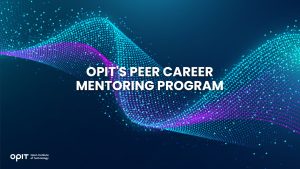
The Open Institute of Technology (OPIT) is the perfect place for those looking to master the core skills and gain the fundamental knowledge they need to enter the exciting and dynamic environment of the tech industry. While OPIT’s various degrees and courses unlock the doors to numerous careers, students may not know exactly which line of work they wish to enter, or how, exactly, to take the next steps.
That’s why, as well as providing exceptional online education in fields like Responsible AI, Computer Science, and Digital Business, OPIT also offers an array of career-related services, like the Peer Career Mentoring Program. Designed to provide the expert advice and support students need, this program helps students and alumni gain inspiration and insight to map out their future careers.
Introducing the OPIT Peer Career Mentoring Program
As the name implies, OPIT’s Peer Career Mentoring Program is about connecting students and alumni with experienced peers to provide insights, guidance, and mentorship and support their next steps on both a personal and professional level.
It provides a highly supportive and empowering space in which current and former learners can receive career-related advice and guidance, harnessing the rich and varied experiences of the OPIT community to accelerate growth and development.
Meet the Mentors
Plenty of experienced, expert mentors have already signed up to play their part in the Peer Career Mentoring Program at OPIT. They include managers, analysts, researchers, and more, all ready and eager to share the benefits of their experience and their unique perspectives on the tech industry, careers in tech, and the educational experience at OPIT.
Examples include:
- Marco Lorenzi: Having graduated from the MSc in Applied Data Science and AI program at OPIT, Marco has since progressed to a role as a Prompt Engineer at RWS Group and is passionate about supporting younger learners as they take their first steps into the workforce or seek career evolution.
- Antonio Amendolagine: Antonio graduated from the OPIT MSc in Applied Data Science and AI and currently works as a Product Marketing and CRM Manager with MER MEC SpA, focusing on international B2B businesses. Like other mentors in the program, he enjoys helping students feel more confident about achieving their future aims.
- Asya Mantovani: Asya took the MSc in Responsible AI program at OPIT before taking the next steps in her career as a Software Engineer with Accenture, one of the largest IT companies in the world, and a trusted partner of the institute. With a firm belief in knowledge-sharing and mutual support, she’s eager to help students progress and succeed.
The Value of the Peer Mentoring Program
The OPIT Peer Career Mentoring Program is an invaluable source of support, inspiration, motivation, and guidance for the many students and graduates of OPIT who feel the need for a helping hand or guiding light to help them find the way or make the right decisions moving forward. It’s a program built around the sharing of wisdom, skills, and insights, designed to empower all who take part.
Every student is different. Some have very clear, fixed, and firm objectives in mind for their futures. Others may have a slightly more vague outline of where they want to go and what they want to do. Others live more in the moment, focusing purely on the here and now, but not thinking too far ahead. All of these different types of people may need guidance and support from time to time, and peer mentoring provides that.
This program is also just one of many ways in which OPIT bridges the gaps between learners around the world, creating a whole community of students and educators, linked together by their shared passions for technology and development. So, even though you may study remotely at OPIT, you never need to feel alone or isolated from your peers.
Additional Career Services Offered by OPIT
The Peer Career Mentoring Program is just one part of the larger array of career services that students enjoy at the Open Institute of Technology.
- Career Coaching and Support: Students can schedule one-to-one sessions with the institute’s experts to receive insightful feedback, flexibly customized to their exact needs and situation. They can request resume audits, hone their interview skills, and develop action plans for the future, all with the help of experienced, expert coaches.
- Resource Hub: Maybe you need help differentiating between various career paths, or seeing where your degree might take you. Or you need a bit of assistance in handling the challenges of the job-hunting process. Either way, the OPIT Resource Hub contains the in-depth guides you need to get ahead and gain practical skills to confidently move forward.
- Career Events: Regularly, OPIT hosts online career event sessions with industry experts and leaders as guest speakers about the topics that most interest today’s tech students and graduates. You can join workshops to sharpen your skills and become a better prospect in the job market, or just listen to the lessons and insights of the pros.
- Internship Opportunities: There are few better ways to begin your professional journey than an internship at a top-tier company. OPIT unlocks the doors to numerous internship roles with trusted institute partners, as well as additional professional and project opportunities where you can get hands-on work experience at a high level.
In addition to the above, OPIT also teams up with an array of leading organizations around the world, including some of the biggest names, including AWS, Accenture, and Hype. Through this network of trust, OPIT facilitates students’ steps into the world of work.
Start Your Study Journey Today
As well as the Peer Career Mentoring Program, OPIT provides numerous other exciting advantages for those who enroll, including progressive assessments, round-the-clock support, affordable rates, and a team of international professors from top universities with real-world experience in technology. In short, it’s the perfect place to push forward and get the knowledge you need to succeed.
So, if you’re eager to become a tech leader of tomorrow, learn more about OPIT today.
Have questions?
Visit our FAQ page or get in touch with us!
Write us at +39 335 576 0263
Get in touch at hello@opit.com
Talk to one of our Study Advisors
We are international
We can speak in:

